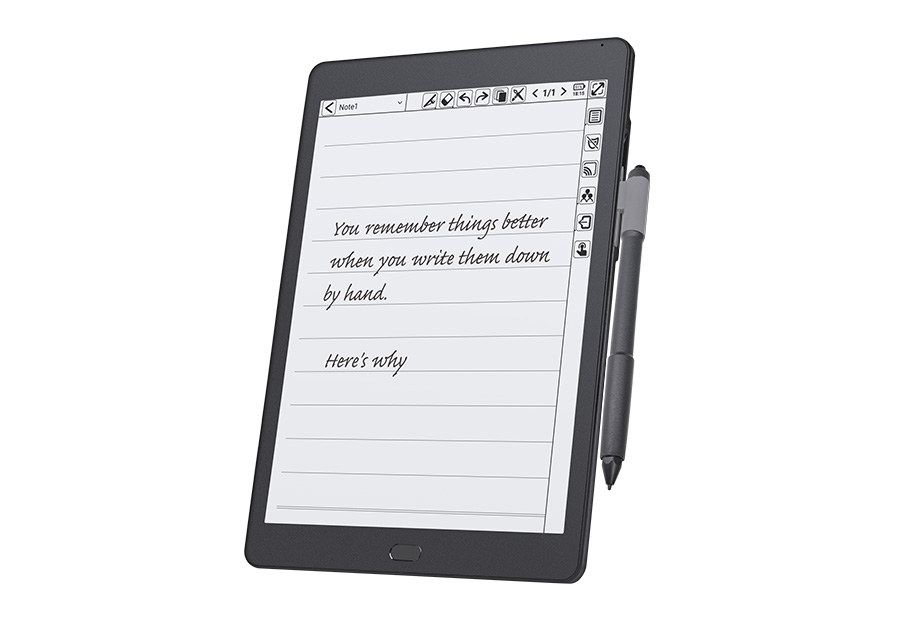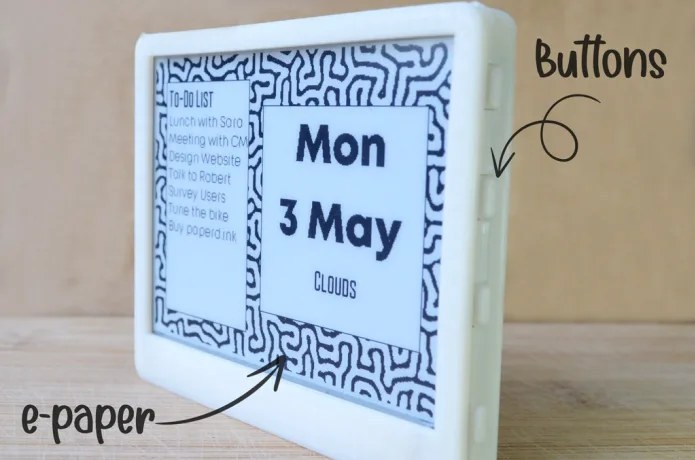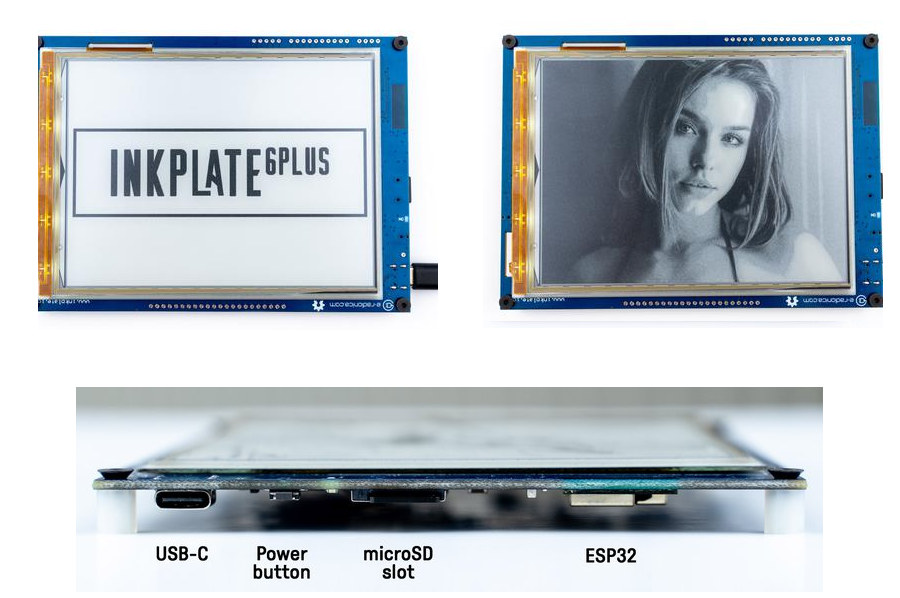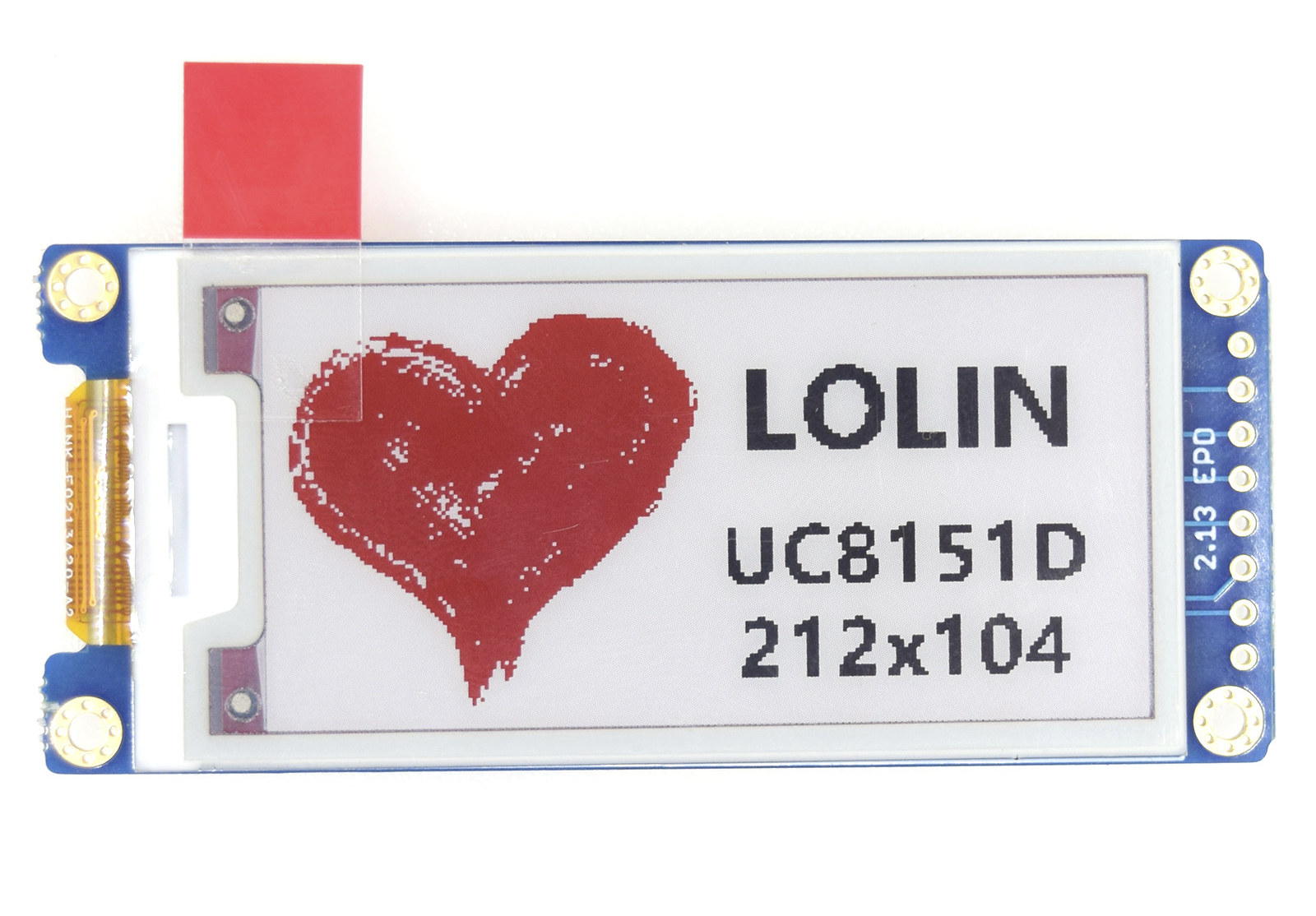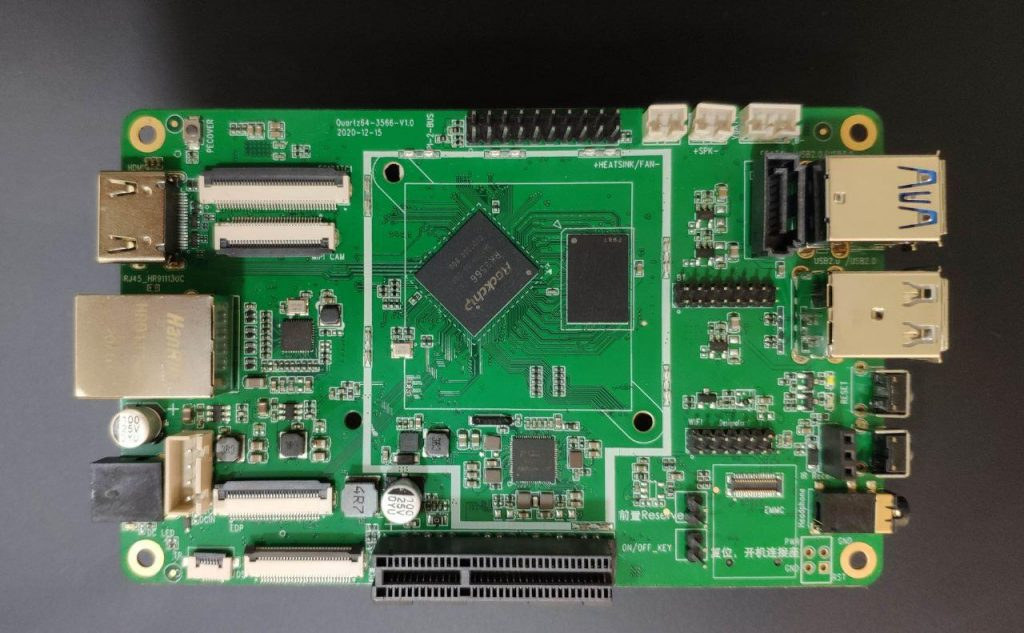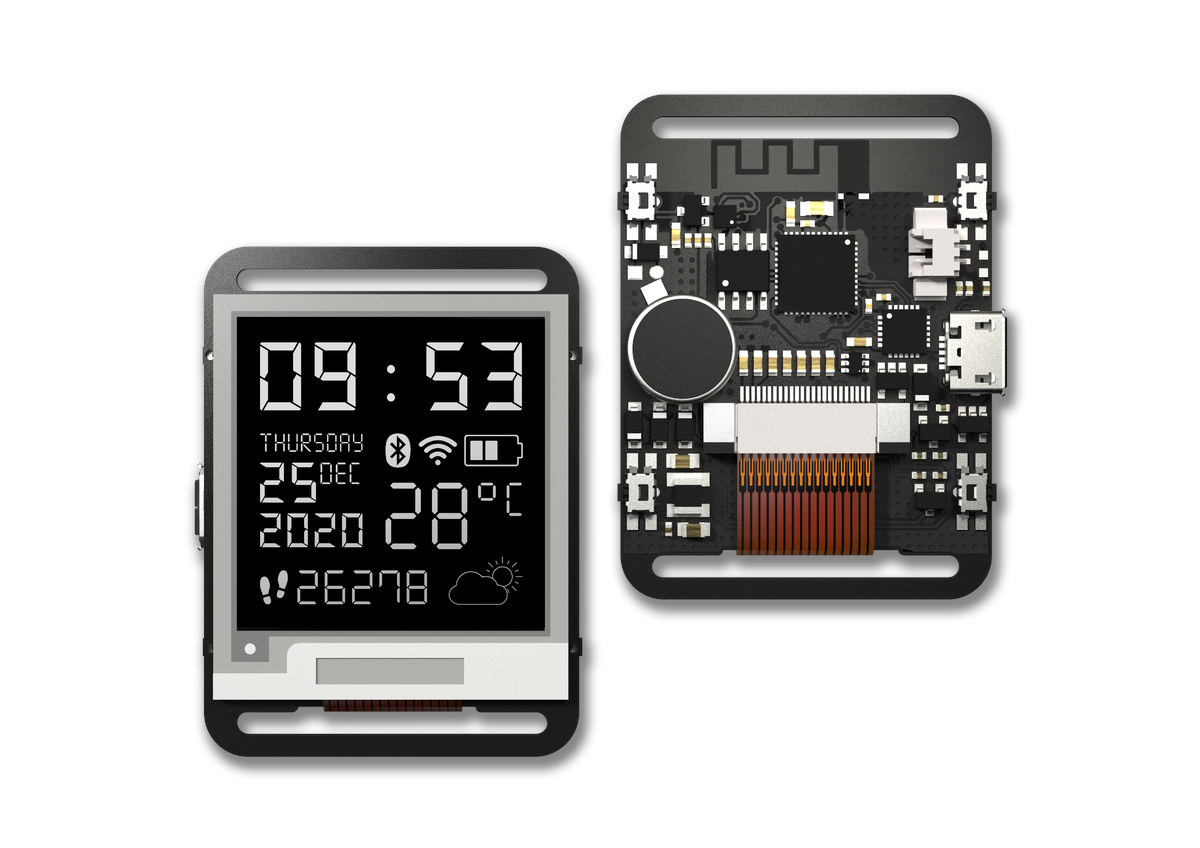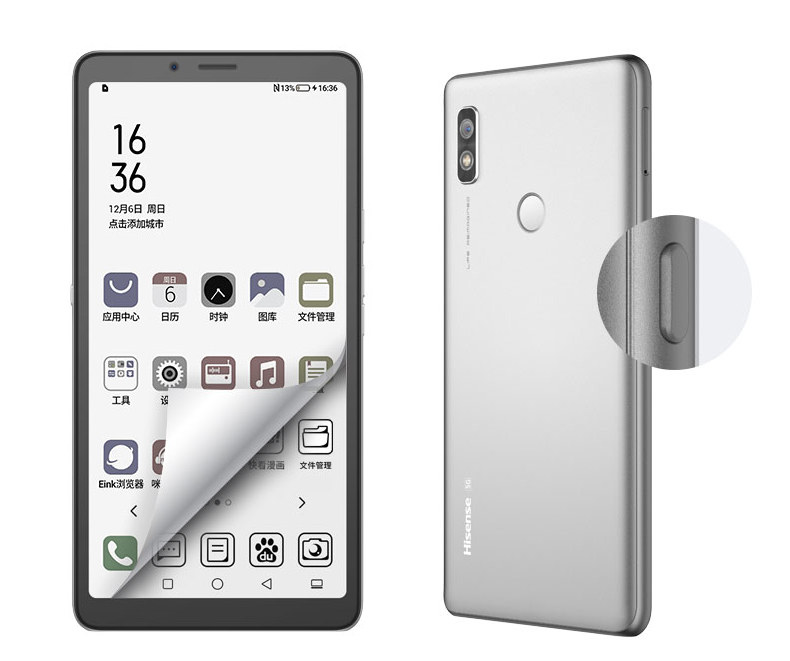Geniatech used to be better known for their Amlogic TV boxes, before expanding their business to development boards and systems-on-modules. But the company has now introduced KloudNote, a 10.3-inch E-reader running Android 8.1 on a quad-core Cortex-A35 processor. The device is equipped with 2GB of RAM and a 16GB eMMC flash, supports WiFi 5 and Bluetooth, as well as optional 2G/3G/4G LTE cellular connectivity, and comes with a USB-C port and a headphone jack. KloudNote (sometimes written Kloud Note) specifications: SoC – Unnamed quad-core Cortex-A35 processor @ 1.2 GHz System Memory – 2GB RAM Storage – 16GB or 32GB eMMC flash Display – 10.3-inch E-Ink flexible screen with cover-lens, 1872×1404 resolution, capacitive touch and electromagnetic touch with support for a stylus with 4096-level of pressure sensitivity Connectivity 802.11 a/b/g/n/ac WiFi 5, Bluetooth 4.2 Optional 2G/3G/4G Audio – Earphone jack, built-in speaker & microphone USB – 1x USB-C port for charging Documents […]
paperd.ink 4.2-inch ESP32-based e-Paper display ships with a 3D printed enclosure (Crowdfunding)
We’ve covered a fair amount of connected e-Paper/e-Ink displays based on ESP32 WiFi & Bluetooth SOC including several Inkplate displays, with the latest Inkplate 6Plus model including a touchscreen, TTGO T5 displays with small sizes, or even the fully enclosed M5Paper ESP32 IoT development kit with a 4.7-inch touchscreen e-Paper display. There’s also Watchy ESP32 smartwatch with a 1.54-inch display if you really need something small. But here’s another option courtesy of Rohit & Prasad, two young engineers from India, with the paperd.ink 4.2-inch ESP32-powered e-Paper display that ships with an optional 3D printed enclosure. paperd.ink display specifications: Wireless module – ESP32-WROOM-32 module with ESP32 dual-core processor, 4 MB SPI flash, 2.4 GHz WiFi 4 & Bluetooth LE connectivity Storage – MicroSD card slot for storing images, files, etc Display – 4.2″ monochrome e-Paper display with 400 x 300 resolution; 3s for full refresh; partial refresh supported USB – 1x […]
Inkplate 6PLUS ESP32 ePaper display gets higher resolution, a touchscreen, a frontlight (Crowdfunding)
Inkplate 6PLUS is an updated version of Inkplate 6 ESP32 powered 6-inch ePaper display that was introduced in 2019, wand comes with a higher 1024 x 758 resolution, and the addition of a touchscreen and a frontlight. Just like the original product, Inkplate 6PLUS makes use of recycled e-paper displays without thousands of screens currently in stock. Refresh performance per pixel is faster and similar to Inkplate 10, which leads to a complete screen refresh being about as fast as on the original Inkplate 6 despite the higher resolution. Inkplate 6PLUS specifications: Wireless module – ESP32 WROVER module with dual-core ESP32 processor with Wi-Fi 4 & Bluetooth 4.0 (BLE) connectivity, 8MB PSRAM, 4MB flash External storage – MicroSD card socket Display – 6-inch, 1024 x 758 e-paper display with support for grayscale, partial updates, and quick refresh cycles 1.27 second refresh time in black & white mode 1.52 second refresh […]
Tiny Tri-color E-Ink display for Wemos D1 Mini board sells for $10
Wemos D1 Mini is one of my favorites ESP8266 boards with a cheap price, tiny form factor, and support for stackable expansion boards. Lolin has now launched a small 2.13-inch tri-color E-Ink display that is compatible with D1 mini, D1 mini Pro, and D32 Pro boards, and sells for just $9.90 plus shipping. Specifications: 2.13-inchTri-Color (red/black/white) ePaper/e-Ink display with 212×104 resolution Driver IC – Good Display UC8151D Connection to D1 mini, D1 mini Pro, D32 Pro via 10-pin connector Debugging – 8-pin unpopulated header with EPD signals (SPI, Reset, Busy…) 3.3V, GND You may wonder why the PCB reads “2.13 INCH e-Paper 250×122”, while the resolution is 212×104. That’s because the company probably reused the PCB from their 2.13-inch black and white e-Paper display with 250×122 resolution (IL3897 driver). The display can be programmed with Arduino using LOLIN_EPD, Adafruit_GFX, and Adafruit_BusIO libraries as explained in the Wiki. You’ll find three […]
7.8-inch PocketBook InkPad Color eReader launched for $329
Color eReaders and color e-Ink smartphones have started to show up last year with products such as Onyx Boox Poke2 Color, PocketBook Color, or Hisense A7 CC with displays ranging from 6-inch to 6.7-inch in size. If you like the idea of having a color eReader, but would prefer a (slightly) large display, PocketBook InkPad Color may be an interesting option with the eReader featuring a 7.8-inch Kaleido e-Ink display with 4096 colors. PocketBook InkPad Color specifications: Processor – Unnamed dual-core processor @ 1 GHz (probably Allwinner B288 dual-core Arm Cortex-A7 processor) System Memory – 1GB RAM Storage – 16GB eMMC flash, and microSD card reader up to 32GB Display – 7.8 inch E-Ink Kaleido display with 1872 x 1404 (16 shades of grey – 300 ppi) or 624 x 468 (color – 100 ppi) resolution, capacitive touch, and front-light Connectivity – WiFi 4 and Bluetooth (e.g. for audio) USB […]
Pine64 unveils Quartz64 SBC powered by Rockchip RK3566 SoC
We may just have written about Geniatech RK3566/RK3568 development board, but as expected, Pine64 has now unveiled more details about Quartz64 SBC powered by Rockchip RK3566 SoC. As we’ll see below, the design is very similar to RK3399 based RockPro64, but the new model adds a native SATA 3.0 port, an integrated battery charging circuitry, an ePD port for e-Ink displays, and supports more memory with up to 8GB LPDDR4 RAM. Quartz64 Model A preliminary specifications: SoC – Rockchip RK3566 quad-core Cortex-A55 processor up to 1.8 GHz with Arm Mali-G52 GPU supporting OpenGL ES 1.1/2.0/3.2, OpenCL 2.0, Vulkan 1.1, 0.8 TOPS NPU for AI acceleration System Memory – 2GB to 8GB LPDDR4 Storage SPI Flash optional eMMC module from 16GB up to 128GB capacity bootable SDHC/SDXC MicroSD card up to 256GB (or is it 2TB?) SATA 3.0 port (multiplexed with USB 3.0) Video Output / Display Interfaces HDMI 2.0a up […]
Watchy Pebble-like Smartwatch with E-paper display, ESP32 processor launched on Crowd Supply
Pebble smartwatch was introduced in 2012 on Kickstarter. The Bluetooth smartwatch came with an E-Paper display, would connect to your Android smartphone or iPhone to receive notifications or other info, and the company also released an SDK for further customization. It was quite popular at the time having sold over one million units, the Pebble Time followed in 2015 with a color display, as well as other models. But despite selling millions of watches, the company folded in 2016, and the Pebble was discontinued after the intellectual property was purchased by Fitbit. Watchy is a new smartwatch that reminds me of the original pebble. It is based on ESP32 WiFi & Bluetooth SoC, equipped with a 1.54-inch E-Paper display with 200×200 resolution, and the usual accelerometer for activity tracking and gesture detection. Watchy key features and specifications: SIP – Espressif Systems ESP32-PICO-D4 system-in-package with ESP32 dual-core processor with Bluetooth LE […]
Hisense A7CC 5G smartphone integrates a 6.7-inch color E-Ink display
Hisense A5 was one of the first phones exclusively equipped with an e-Paper display. But following the launch of color E-Ink displays and color eReaders from other companies last year, the Chinese company has now launched Hisense A7CC 5G smartphone with a 6.7-inch color E-Ink display. The phone is powered by UNISOC T7510 octa-core processor, which appears to be based on T710 SoC with 5G modem, and comes with 6GB RAM and 128GB flash storage. Hisense A7CC specifications: SoC – UNISOC Tiger T7510 octa-core processor with 4x Arm Cortex-A75 cores @ 2 GHz, 4x Arm Cortex-A55 cores @ 1.8 GHz, and Imagination PowerVR GM9466 GPU System Memory – 6GB RAM Storage – 128GB flash Display – 6.7-inch E-Ink display with 4096 colors, 100 dpi Audio – 3.5mm headphone jack with AK4377AECB audio DAC; built-in microphone and speaker Camera – Dual rear cameras + single front-facing camera Connectivity Cellular – 5G […]


